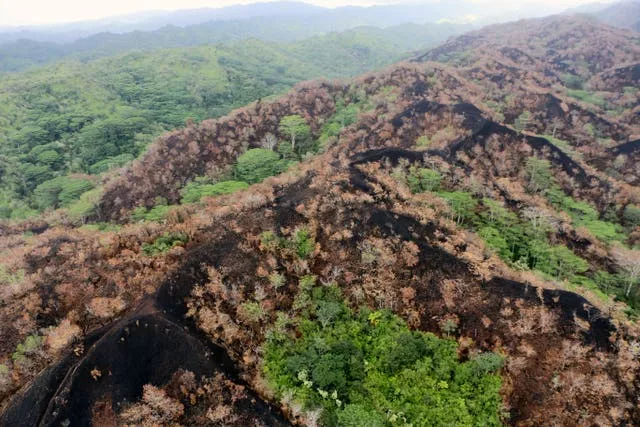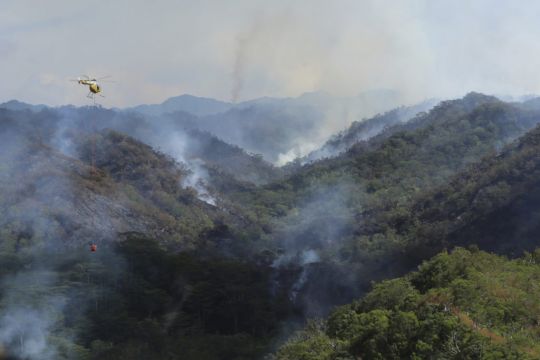A wildfire burning in a remote rainforest in Hawaii is underscoring a new reality for the normally lush island state just a few months after a devastating blaze on a neighbouring island levelled an entire town and killed at least 99 people.
No-one was injured and no homes were damaged in the latest fire, which scorched mountain ridges on Oahu, but the flames wiped out irreplaceable native forestland that is home to nearly two dozen fragile species.
Experts said the ingredients were the same as they were in fire-ravaged Maui’s historic town of Lahaina: severe drought fuelled by climate change is creating fire in Hawaii where it has almost never been before.
JC Watson, the manager of the Koolau Mountains Watershed Partnership, which helps take care of the land on Oahu. He recalled the “beautiful native forest” had uluhe fern, which often dominate Hawaii rainforests, and koa trees whose wood has traditionally been used to make canoes, surfboards and ukuleles.
“It’s not a full-on clean burn, but it is pretty moonscape-looking out there,” he said.

The fact the latest fire was on Oahu’s wetter, windward side is a “red flag to all of us that there is change afoot”, said Sam ’Ohu Gon, senior scientist and cultural adviser at the Nature Conservancy in Hawaii.
The fire mostly burned inside the Oahu Forest National Wildlife Refuge, which is home to 22 species listed as endangered or threatened by the US government.
They include iiwi and elepaio birds, a tree snail called pupu kani oe, and the Hawaiian hoary bat known as opeapea. The US Fish and Wildlife Service, which manages the refuge, said it does not yet know what plants or wildlife may have been damaged or harmed by the fire.
The fire incinerated 2.5 square miles since first being spotted on October 30 and was 90% contained as of Friday. Officials were investigating the cause of the blaze, which was roughly 20 miles north of Honolulu.
The flames have left gaping, dark bald spots amid a blanket of thick green where the fire did not burn. The skeletons of blackened trees poke from the charred landscape.
The burn area may seem relatively small compared to wildfires on the US continent, which can raze hundreds of square miles. But Hawaii’s intact native ecosystems are not large to begin with, especially on smaller islands like Oahu, so even limited fires have far-reaching consequences.

One major concern is what plants will grow in place of the native forest.
Hawaii’s native plants evolved without encountering regular fires and fire is not part of their natural life cycle. Faster-growing non-native plants with more seeds tend to sprout in place of native species afterwards.
Mr Watson said an Oahu forest near the latest fire had uluhe ferns, koa trees and ohia trees before a blaze burned less than a square mile of it 2015. Now the land features invasive grasses that are more fire-prone, and some slow-growing koa.
A much larger 2016 fire in the Waianae mountains on the other side of Oahu took out one of the last remaining populations of a rare tree gardenia, Mr Gon said.
There are also cultural losses when native forest burns. Mr Gon recalled an old Central Oahu story about a warrior who was thrown off a cliff while battling an enemy chief. His fall was stopped by an ohia tree, another plant common in the incinerated area. Feathers from Hawaii’s forest birds were once used to make cloaks and helmets worn by chiefs.
Mr Watson’s organisation is co-ordinating with the Fish and Wildlife Service to conduct initial surveys of the damage. They will devise a restoration plan that will include invasive species control and planting native species. But there are limits to what can be done.
“It’ll never be able to be returned to its previous state within our lifetimes,” Mr Watson said. “It’s forever changed, unfortunately.”







